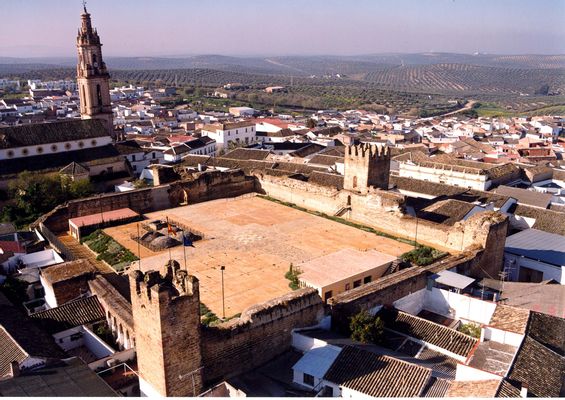This Andalusian city boasts the Mezquita, a stunning mosque-cathedral. Its old Jewish quarter has winding streets, while lively student areas add modern energy.
Córdoba, a city in southern Spain, is known for its unique Mezquita-Catedral, a building that was once a mosque and is now a cathedral. As you walk through La Judería, you'll find yourself in small squares and see patios filled with flowers. The city has preserved structures from its Roman and Moorish past, and you can taste local dishes like salmorejo and flamenquín in its restaurants.
Exploring La Judería
La Judería, Córdoba's old Jewish quarter, has narrow, winding streets that are easy to get lost in. While walking around, you'll come across the Synagogue, one of only three remaining pre-expulsion synagogues in Spain. It was built in 1315 and has Mudéjar-style stucco work and Hebrew inscriptions on its walls. Near the synagogue, you can visit the Casa de Sefarad to learn about Sephardic Jewish culture through its displays and objects.
Alcázar de los Reyes Cristianos: A Royal Fortress
The Alcázar de los Reyes Cristianos was once where Spanish monarchs lived and where the Inquisition had its headquarters. You can climb its towers, look at Roman mosaics in the museum, and walk through its large gardens. The gardens have pools on different levels, fountains, and orange trees, which make them a cool place to visit during Córdoba's hot summers.
Crossing the Roman Bridge
The Roman Bridge goes over the Guadalquivir River and connects the old town to the Torre de la Calahorra. As you walk across its 16 arches, you can see the city's buildings and the river below. At the south end, you can go up the tower to get a view of all of Córdoba and visit the museum about the city's history.
Patios of Córdoba: A Floral Tradition
Córdoba's patios are private courtyards with many colorful flowers and detailed tile work. In May, during the Fiesta de los Patios, many homeowners let people visit their patios. You can also see several patios throughout the year, like the 12 different courtyards at the Palacio de Viana.
Medina Azahara: An Ancient Palace-City
Just outside Córdoba, you'll find Medina Azahara, the remains of a large palace-city built in the 10th century. This archaeological site shows what the Caliphate of Córdoba was like at its peak. The museum at the site uses videos and displays to help you imagine how the city looked long ago. You can walk through the excavated areas and see what's left of homes, government buildings, and gardens.
Mezquita-Catedral: A Unique Building
The Mezquita-Catedral is Córdoba's most famous building. This UNESCO World Heritage site started as a mosque in the 8th century and later became a cathedral. Inside, you'll see 856 columns with red and white striped arches on top. The mihrab, a decorated prayer niche, has detailed Byzantine mosaics. In the middle, there's a Renaissance cathedral nave, creating an unusual mix of Islamic and Christian architecture.
Tasting Córdoban Food
Córdoba's food reflects its history. You can try salmorejo, a cold tomato soup that's thicker than gazpacho and often has ham and hard-boiled egg on top. Another local dish is flamenquín, which is pork loin and ham rolled up, covered in breadcrumbs, and fried. For dessert, you might like pastel cordobés, a pastry filled with pumpkin jam flavored with citrus. Many restaurants in the old town serve these dishes, so you can taste traditional Córdoban food.
Getting to Córdoba
You can easily reach Córdoba from other big Spanish cities. Fast AVE trains from Madrid take about 1 hour and 45 minutes, while the trip from Seville is only 45 minutes. If you're driving, it's about 4 hours from Madrid and 1.5 hours from Seville. The closest airport is in Seville, about 130 kilometers away.
Best Time to Visit
Spring (April to May) is a good time to visit Córdoba. The weather is nice, and you can see the Patio Festival in May. Fall (September to October) also has comfortable temperatures and fewer tourists. Summers in Córdoba are very hot, often over 38°C (100°F), so plan your activities carefully if you visit then.
Where to Stay
To really experience Córdoba, you might want to stay in the old town. The Hospes Palacio del Bailío is in a 16th-century palace and has a spa inspired by Roman baths. For a mid-range option, the Hotel Madinat has comfortable rooms in a traditional Andalusian-style building. If you're on a budget, you could try the Mayflowers Hostel, which has both private rooms and shared dorms in a central location.


















